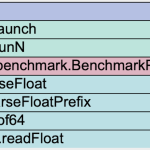2025-11-10 06:36:55
In C++, comparing two objects for equality is straightforward when they are simple types like integers or strings. But what about complex, nested structures? You may have to implement the comparison (operator==) manually for each class, which is error-prone and tedious.
Consider a person class.
class person {
public:
person(std::string n, int a) : name(n), age(a) {}
private:
std::string name;
int age;
std::vector<hobby> hobbies;
std::optional<uint64_t> salary;
};
To compare two person objects, we need to check if their names, ages, hobbies, and salaries match. Hobbies are a vector of hobby objects, each with a name. Salaries are optional. Manually writing operator== for this would involve checking each field, and if hobby changes, you would have to update it.
Without reflection, you would have to write something ugly of the sort if you don’t want to rely on C++ default comparisons.
bool operator==(const person& a, const person& b) {
return a.name == b.name && a.age == b.age && a.hobbies == b.hobbies && a.salary == b.salary;
}
But this assumes hobby has operator==, and std::vector<hobby> has it only if hobby does. If hobby lacks ==, compilation fails. Moreover, for large classes, it becomes annoying.
Instead, I wrote a small example that fully automates the process. You just add an operator overload.
bool operator==(const person& a, const person& b) {
return deep_equal::compare(a, b);
}
The trick is that C++26 allows you to query a type’s members at compile time and iterate over them. The function std::meta::nonstatic_data_members_of, which gives us a list of members.
My complete implementation is less than a hundred lines of code, and it comes down to the following lines of code.
bool compare_same(const T& a, const T& b) {
template for (constexpr auto mem : std::define_static_array(std::meta::nonstatic_data_members_of(^^T, std::meta::access_context::unchecked()))) {
if (!compare_same(a.[:mem:], b.[:mem:])) {
return false;
}
}
return true;
}
It relies on the reflection operator ^^T, which produces a std::meta::info value representing the type itself. Inside the function body, std::meta::nonstatic_data_members_of(^^T, ...) queries all non-static data members of T, returning a vector of reflection values in declaration order. The unchecked access context deliberately bypasses visibility rules, allowing comparison of private and protected members. This reflection vector is then wrapped in std::define_static_array, which materializes it into a static array, making it iterable in a compile-time loop. The template for loop iterates over each member reflection mem at compile time. For each, the splice expression a.[:mem:] directly accesses the corresponding member. The [: :] is more or less the inverse of the reflection operator (^^T): think of it as a going into a meta universe with ^^ and coming back into the standard C++ universe with [: :].
The approach ensures zero runtime overhead, as all reflection, splicing, and looping are resolved during compilation. As a programmer, it gives you full control on how you want to implement the comparison in your application. I posted a full demonstration.
2025-10-31 06:54:44

There is sometimes confusion about what a PhD is.
The main signal that you should derive from the fact that someone has a PhD is that they are well suited to the university campus environment.
Maybe people who complete a PhD are especially thorough and finish their work to perfection? In computer science, academic projects have a reputation for being of relative quality. Stonebraker, a famous computer scientist, attributes part of his success to his dedication to finishing up the work:
The smartest things we ever did, was to then put in the effort to make it really work. (Stonebraker, 2014)
Did you know that a lot of people have a PhD?
Over 3% of the population in a country like Switzerland has a PhD. Hence, in a city of 1 million people, you may have 30,000 people with a PhD. In Germany, that would be 15,000 people.
Do PhDs lead to great jobs and higher incomes? Not really. If you do get your PhD and secure a good job and keep it for a long time (so no early retirement), then you can do a bit better than the average person who stopped with a professional degree. But even that is misleading because we don’t know how the person smart enough to outcompete 100 other PhDs for a prestigious job would have done had they not gone for the PhD.
You know, Joe, who has a PhD and has become a full professor at Prestigious University… well… it is likely that Joe has been working week-ends and nights for years. Joe is excessively well connected. Joe was always smarter than anyone else in his classes. Joe can sit down and write a great 20-page scientific essay without ChatGPT and without much effort. Joe can navigate politics better than most.
Sometimes young people think… well, it is terrible to be job hunting at 22 without experience. Right, but try job hunting at 30 with a PhD and no actual job experience. It is worse! Much worse!
Given these facts, do you really want to be ‘as smart as a PhD’?
« In the short run, pursuing a PhD entails substantial opportunity costs. Early-career earnings for PhD graduates are significantly lower than those of individuals with master’s or professional degrees. (…) Over the lifecycle, earnings do eventually recover but only under specific conditions. The most favourable long-run outcomes are concentrated among those who secure academic employment and remain in full-time work late into life. (…) However, the structure of this system increasingly resembles a tournament: the payoff remains high for those who reach the top, but the odds of doing so have declined. Our analysis documents that the economic outcomes of recent PhD graduates have worsened over time. The bottom of the earnings distribution has grown more populated, and early-career returns have declined even as aggregate statistics appear stable due to rising returns among older cohorts. » (Benjamin et al., 2025)
2025-10-27 04:13:34

The hardest problem in software performance is often to understand your code and why it might be slow. One approach to this problem is called profiling. Profiling tries to count the time spent in the various functions of your program.
It can be difficult to understand the result of profiling. Furthermore, it is more complicated than it seems. For example, how do you count the time spent in a function A that calls another function B. Does the time spent in function B count for the time spent in function A? Suppose function A executes code for 2 seconds, then calls function B which takes 3 seconds to run, and finally A continues with 1 additional second. The total time for A would be 6 seconds if everything were included, but that does not accurately reflect where the time is truly spent. We might prefer the exclusive or flat time: the time spent only in the body of the function itself, without counting calls to other functions. In our example, for A, that would be 2 + 1 = 3 seconds (the time before and after the call to B). For B, it would be 3 seconds. The cumulative time is the total time spent in the function and all the functions it calls, recursively. For A, that would include the 3 own seconds plus the 3 seconds of B, totaling 6 seconds. For B, it would just be its 3 seconds, unless it calls other functions.
Go has builtin support for profiling. It requires two steps.
runtime/pprof to collect profiles.go tool pprof to review the data.Let us consider a concrete example. We have a benchmark function parsing repeatedly strings as floating-point numbers.
func BenchmarkParseFloat(b *testing.B) {
for i := 0; i < b.N; i++ {
idx := i % len(floatStrings)
_, _ = strconv.ParseFloat(floatStrings[idx], 64)
}
}
In effect, we want to profile the strconv.ParseFloat function to see where it is spending its time. We run:
go test -bench=. -cpuprofile=cpu.prof
Notice the -cpuprofile=cpu.prof flag which instructs go to dump its profiling data to the file cpu.prof. Go profiles the code using a sampling-based approach, where it periodically interrupts the execution to capture stack traces of running goroutines. It has low overhead—only a small fraction of execution time is spent on sampling—and it works across multiple goroutines and threads.
If you are trying to profile a long-running application, like a server, you can use the net/http/pprof package to request profiling data dynamically using network requests. However, it requires modifying your application accordingly.
We can call go tool pprof on the cpu.prof to examine its result. The simplest flag is -text, it prints out a summary in the console.
go tool pprof -text cpu.prof
You might see the following output.
Time: 2025-10-26 14:35:03 EDT
Duration: 1.31s, Total samples = 990ms (75.45%)
Showing nodes accounting for 990ms, 100% of 990ms total
flat flat% sum% cum cum%
830ms 83.84% 83.84% 830ms 83.84% strconv.readFloat
20ms 2.02% 92.93% 900ms 90.91% strconv.atof64
20ms 2.02% 94.95% 20ms 2.02% strconv.eiselLemire64
20ms 2.02% 96.97% 20ms 2.02% strconv.special
10ms 1.01% 98.99% 910ms 91.92% strconv.ParseFloat
10ms 1.01% 100% 10ms 1.01% strconv.atof64exact
It can be difficult to interpret this result. Thus we want to visualize the result. My favorite technique is the flame graph. It is a useful technique invented by Brendan Gregg.
A flamegraph is a stacked bar chart where each bar represents a function call, and the width of the bar indicates the estimated time spent in that function. The time can be replaced by other metrics such as CPU instructions, memory allocations or any other metrics that can be matched to a software function. The y-axis represents the call stack depth, with the top being the root of the stack. Colors can be used to make it more elegant.
The name flame graph comes from the shape that often resembles flames, with wider bases indicating more time-consuming functions and narrower tops showing less frequent paths. There are many variations such as flame charts where the x-axis represents time progression, and y-axis shows call stack at each moment. But flame graphs are more common.
Given that you have generated the file cpu.prof, you can visualize it by first starting a web server:
go tool pprof -http=:8123 cpu.prof
It assumes that port 8123 is free on your system: you can change the port 8123 if needed. Open your browser at the URL http://localhost:8123/ui/flamegraph.
You should see a graph:
Our first step is to narrow our focus on the function we care about. For more clarity, double click on strconv.ParseFloat, or right click on it and select focus. The bulk of the time (over 80%) of the ParseFloat is spent in the readFloat function. This function converts the string into a mantissa and an exponent. There are other functions being called such as strconv.special, strconv.atof64exact, and strconv.eiselLemire64. However, they account for little time in this specific benchmark.
Thus, if we wanted to improve the performance of strconv.ParseFloat function, we might want to focus on optimizing the readFloat function. Furthermore, at least given our specific test, optimizing the strconv.special, strconv.atof64exact, and strconv.eiselLemire64 functions is unlikely to be productive.
In our specific example, the profiling gives us a clear answer. However, it is not always so. Profiling can be misleading. For one thing, profiling is typically statistical. If your program is short-lived or has uneven load, it might provide incorrect data. Furthermore, inefficient work spread out over many functions could not show up in a flame graph. Thus you should always interpret profiling results with care.
2025-10-26 22:59:29

If you have ever met me in person, you know that when you share an idea with me, I simplify it to its core and reflect it back to you, focusing on its essential parts. I dissect each statement for precision. “What do you mean by this word?”
I have two decades of experience working with academics who overcomplicate everything. Humans are easily confused. A project proposal with ten moving parts and five objectives is overwhelming. Most people cannot think it through critically, which can lead to disaster.
By instinct, I simplify problems as my first step, reducing them to their “minimum viable product,” as they say in Silicon Valley.
Some people avoid simplicity to sound smarter. They won’t admit it, maybe not even to themselves, but that’s what they are thinking: “Oh no! I’m not doing this simple thing; my work is much more sophisticated.”
That’s a terrible idea. Even simple projects become challenging if you are ambitious. There is no need to complexify them. For example, seven years ago, we aimed to create a JSON parser faster than anything on the market—a simple idea. A senior colleague in computer science saw me at a campus coffee shop while I was working. He asked what I was busy doing… When I told him, “We’re writing a fast JSON parser,” he laughed. He would later admit that he thought I was joking: how could I work on something so mundane. I wasn’t kidding. The result was simdjson, a JSON parser four times faster than anything else at the time. By keeping our project conceptually simple, we made success easier.
Complexity is a burden, not a badge of pride.
Clear thinking demands precision.
People use emotionally charged words like “safe.” “My car is safe.” “My software is safe.” What does that mean? Define it precisely.
A graduate student of mine recently proposed reducing the cognitive load of agentic AI on developers. “Cognitive load” sounds great—thousands of papers discuss it—but what does it mean? How do measure it?
Take “AI” as another example. Nobody knows what AI is. Is a Google search AI? Is image search AI? Is an expert system AI? Or do you mean large language models? Clarify what you mean.
Too often, we accidentally hide behind overly abstract language. Not only does this harm how we think, but it also harms how we are perceived. People who avoid jargon are viewed as more honest, trustworthy and benevolent (Fick et al. 2025).
Your motivation should be clear from the start. Here is an example. I am often asked: “Should I go to graduate school?” What’s the motivation? Often, it’s to get a great job. Years ago, I had this conversation with a research assistant:
Given his exceptional technical skills, I told him he could already land that job soon. He did, and now he’s in a leadership role at one of Montreal’s top companies. He is outearning me by a wide margin, no doubt.
People often lose sight of their motivation and follow trends. Reconnect with your motivation and adjust your means accordingly.
To sum up, my advice for clear thinking:
2025-10-20 05:28:24

In large code bases, we are often stuck with unpleasant designs that are harming our performance. We might be looking for a non-intrusive method to improve the performance. For example, you may not want to change the function signatures.
Let us consider a concrete example. Maybe someone designed the programming interface so that you have to access the values from a map using an index. They may have code like so:
auto at_index(map_like auto& index_map, size_t idx) {
size_t count = 0;
for (const auto &[key, value] : index_map) {
if(count == idx)
return value;
count++;
}
throw std::out_of_range("Index out of range");
}
This code goes through the keys of the map idx times. Typically, it implies some kind of linked list traversal. If you are stuck with this interface, going through the values might imply repeated calls to the at_index function:
for (size_t i = 0; i < input_size; ++i) {
at_index(index_map, i);
}
If you took any kind of computer science, you will immediately see the problem: my code has quadratic complexity. If you double the map size, you may quadruple the running time. It is likely fine if you have 2 or 4 elements in the map, but definitely not fine if you have 400 elements.
The proper solution is to avoid such a design. If you can have access directly to the map, you can just iterate through it directly:
for (auto& [key, value] : index_map) {
sum += value;
}
But what if you are stuck? Assume that the map is never modified in practice. Then you can use a static or thread_local cache. The key insight is to keep in cache your location in the map, and start from there on the next query. If the user is typically querying in sequence, then your cache should speed up tremendously the function.
auto
at_index_thread_local_cache(map_like auto& index_map,
size_t idx) {
using iterator = decltype(index_map.begin());
struct Cache {
iterator last_iterator;
size_t last_index = -1;
decltype(&index_map) map_ptr = nullptr;
};
thread_local Cache cache;
if (cache.map_ptr == &index_map
&& idx == cache.last_index + 1
&& cache.last_iterator != index_map.end()) {
cache.last_iterator++;
cache.last_index = idx;
if (cache.last_iterator != index_map.end()) {
return cache.last_iterator->second;
} else {
throw std::out_of_range("Index out of range");
}
} else {
cache.last_iterator = index_map.begin();
cache.last_index = -1;
cache.map_ptr = &index_map;
size_t count = 0;
for (auto it = index_map.begin();
it != index_map.end(); ++it) {
if (count == idx) {
cache.last_iterator = it;
cache.last_index = idx;
return it->second;
}
count++;
}
throw std::out_of_range("Index out of range");
}
}
In C++, a thread_local variable is such that there is just one instance of the variable (shared by all function calls) within the same thread. If you wish to have just one instance of the variable for the entire program, you can use static instead, but thread_local is the best choice in our case. You might be worried about the performance implication of a thread_local variable, but it is generally quite cheap: we only add a few instructions when accessing it or modifying it.
Our cache variable remembers the last accessed iterator and index per thread. If the next index is requested, we just increment the iterator and return. If the access is non-sequential or the first call, it falls back to a linear scan from the beginning, rebuilding the cache along the way.
The code is more complicated, and if you are not accessing the key in sequence, it might be slower. However, the performance gains can be enormous. I wrote a benchmark to test it out with maps containing 400 elements.
| Method | ns/key | instructions/key |
|---|---|---|
| original | 300 | 2000 |
| cache | 2 | 20 |
In my case, the cache multiplied the performance by 150. Not bad.
2025-10-18 02:50:53

Many view scientific research as a public good. I consider this naive and indefensible. Scientific progress hinges on people and culture, not on research results as public goods.
What do they mean by a public good? A public good is non-excludable: Once a scientific discovery is made anyone can access it at low cost.
If true, why bother innovating? Just wait and adopt others’ discoveries.
History tells us that it does not work. The British Empire’s technological edge took decades for others to match, despite eventual diffusion—at great cost.
Consider the most significant advance of the last 20 years: large language models (LLMs). Papers, code, and breakthroughs are freely available online.
Yet firms like OpenAI, Anthropic, and xAI pay millions in salaries to top talent. Why? Can’t others just study the papers and replicate?
Most organizations and countries can’t capture this “new knowledge.” Europe lacks an OpenAI equivalent for a reason.
Knowledge is not a fluid, infinitely replicable like Jesus’s loaves. If you gave Romans the design plans of a modern Tesla, they would not know what to do with it. They would first need to become Tesla engineers which would take them years and require that they live among Tesla engineers. You cannot show up to your local university’s Physics department and just copy their knowledge into your head. You need to first become a good physicist which is going to take years and require that you live with physicists.
Scientific progress as cultural evolution. Adopting discoveries requires cultural updates—and it is far from easy. Einstein’s papers are public, yet reading them won’t make you Einstein. He wasn’t a public good; he thrived in a specific culture. It’s unclear if he’d fit in today’s universities.
We defend government funded research, often claiming markets can’t price public goods. But markets price large language models effectively now. Innovators capture only a fraction of the value, but resources do flow to productive entities regardless of credit.
In fact, I believe that the current relative scientific stagnation stems from government intervention. Pre-1970s laissez-faire policies served scientific progress better.
But even if you disagree, please do not spread the naive view that knowledge and scientific progress are public goods. It is not. It is very much a private good as it is a cultural artefact. It is all about people, specific people, and how they think. Cultural artefacts can and will spread, obviously, but there is nothing free about it. And will definitively not spread equally everywhere.
From Galileo to today’s amateur astronomers, scientists have been rebels. Like artists and poets, they are free spirits who resist the restrictions their cultures impose on them. In their pursuit of nature’s truths, they are guided as much by imagination as by reason, and their greatest theories have the uniqueness and beauty of great works of art. (Freeman Dyson)